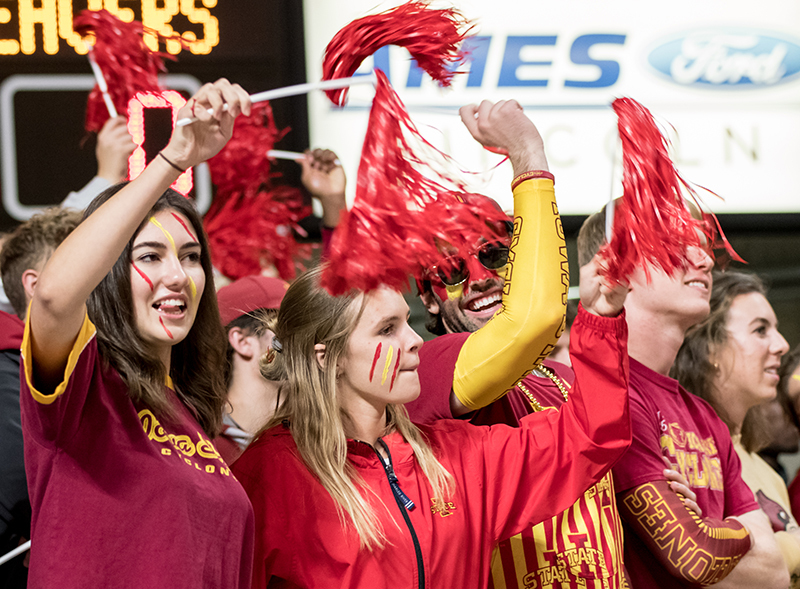Leaf business
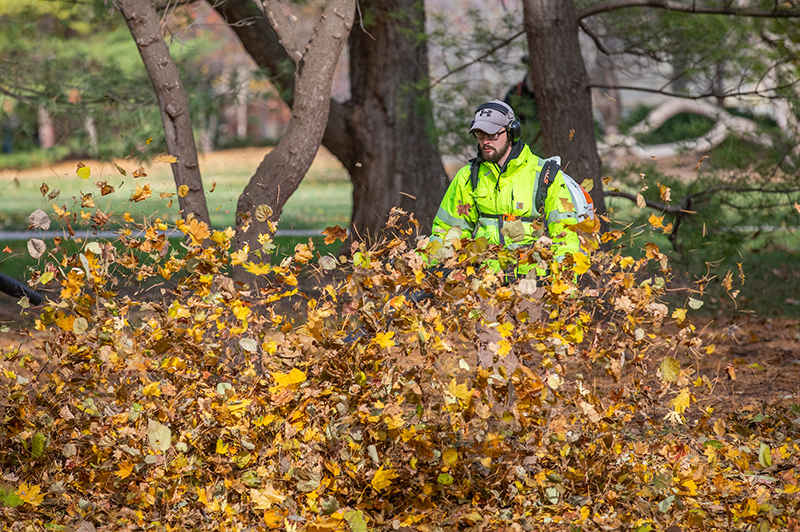
Groundskeeper Donovan Snodgrass, campus services, uses a blower to pile fallen leaves for collection Monday near the Enrollment Services Center. Photos by Christopher Gannon.
Iowa State's beautifully landscaped campus means the campus services team is corralling lots of leaves this time of year -- in fact, several tons each day.
Until the volume overwhelms, mulching decks on mowers chop up a lot of leaves, providing organic matter for soil and turf health, said campus services senior manager Barb Steiner. When there are too many to mulch, the leaves are collected and transported to the university's compost facility (PDF) at the dairy farm south of Ames, where they're mixed with materials from around the university: Manure and bedding from animal sciences farms, food waste from dining halls and plant materials from greenhouses and Reiman Gardens. The leaves and plant materials (high carbon) help break down the manure (high nitrogen), she said.
Each truckload of leaves is weighed, and Steiner said they're currently delivering three to four tons daily to the compost facility. Weight-wise, that's a little light, but the leaves are very dry, she noted.
Mild fall temperatures have kept leaves on the trees longer than normal, and at midweek, Steiner estimated campus services' leaf work is less than half done for the season -- perhaps a week or two behind the timing in more normal years.
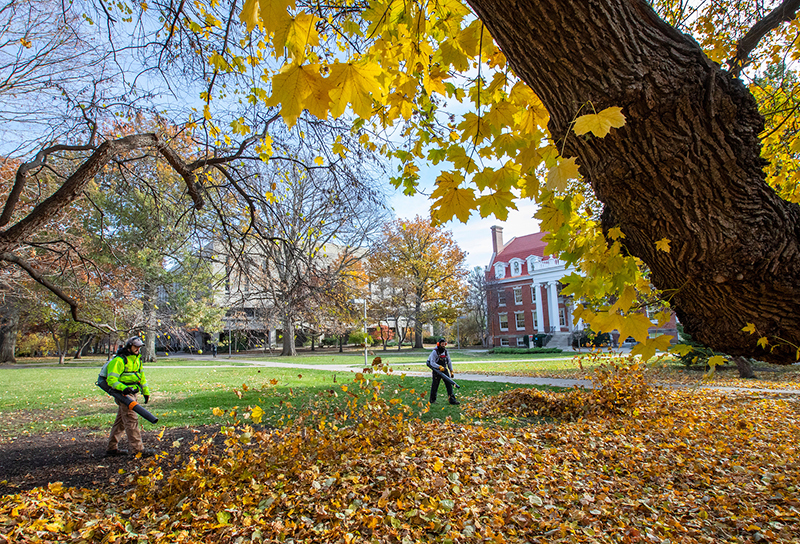
Groundskeepers (l-r) Donovan Snodgrass and Kurt Garretson use blowers to advance on fallen leaves and move them to a collection spot east of Pearson Hall.
New program taps into student-to-student connection
When students have a problem they typically turn to other students first for help. That is the idea behind the new student wellness program, Thrive@ISU.
It is a confidential program that helps students identify well-being issues they're struggling with, through conversation with a trained graduate student, and then develop an action plan for improvement. The student-to-student effort provides a safe space to learn about areas of well-being affecting them, available support resources and help in establishing steps to improve their situation. It is not counseling or a crisis service.
Learn more
Faculty and staff can help the program by making students aware of it. It's not an option for crisis care, but it is a good starting point for nearly anything else. Faculty or staff with questions about the program, or a department or unit that would like to have a graduate student visit and explain more about Thrive@ISU, can email thrive@iastate.edu.
"When student wellness addresses health and well-being issues, we implement a care model that uses a range of strategies and approaches," said director of student wellness Brian Vanderheyden. "We offer a lot of things on the treatment side, but we had some gap areas in our community-based prevention and peer support.
"Peer-to-peer programs are very helpful -- particularly for college students -- because a lot of times they feel more comfortable engaging with or learning from their peers."
The program began to take shape last spring and was implemented in September. Corrine Schwarting and Pauline Freud are graduate students in counseling psychology who meet with students and help oversee the program.
It's being used on campuses across the nation, including the universities of Iowa and Northern Iowa, Vanderheyden said.
Managing the need
The pandemic coupled with the return to campus, in-person instruction and more frequent social interactions added stress for students. That means an increase in cases at student counseling services. Thrive@ISU helps alleviate some of that. About 100 students already have enrolled in the program.
"We are trying to promote some of our other support services, particularly early, before things worsen for a student," Vanderheyden said. "We want to be able to help them in a variety of ways because not everyone needs individual counseling."
Vanderheyden said the conversation about mental health has been going in a positive direction in recent years, but there still is stigma that creates barriers for students. Thrive@ISU also acts as a bridge to connect students to other services, if needed.
How it works
Students enroll by visiting the Thrive@ISU website and completing an online form. They are emailed a screening survey that takes 10 to 15 minutes to complete.
The survey focuses on 12 areas that impact success -- particularly academic success -- such as mental health, sleep, substance use and eating disorders, Vanderheyden said. After submitting the survey, the student completes a writing activity about what is going well and not well for them personally, academically, emotionally, etc.
Students then can schedule a 60-minute meeting -- virtually or in-person -- with one of the graduate students who reviews the submitted information. The session is conducted through motivational interviewing, a conversation style that is "an empathetic, nonjudgmental approach that positions the student to be a partner with the grad student," Vanderheyden said. "It takes the power dynamic out of it and puts the student in the driver's seat with the grad student along with them."
The student is able to direct conversation to the most important things to them, which accounts for most of the meeting. The final portion is dedicated to action planning, where the student generates their own next steps, Vanderheyden said.
"They come up with at least three steps," he said. "It is very important because it is meeting the student where they are, and they are coming up with steps they are confident in."
After the meeting, students submit an action plan and reflect on how they are doing in weekly check-ins. There is an option for a second meeting.
The graduate student can suggest other offerings available to assist in achieving goals. They have received training on motivational interviewing and can step in to help students who are a safety concern to themselves or others.
Students receive a final survey after 30 days to assess their progress.
"We want to be able to set them up with some sustainable change," Vanderheyden said. "Students are busy, and this is a hybrid structure where they do things on their own and meet with a peer."
Boyles named faculty fellow for high impact practices
Jan Lauren Boyles, associate professor and director of graduate education in the Greenlee School of Journalism and Communication, has been named faculty fellow in the office of the senior vice president and provost for a two-year term.
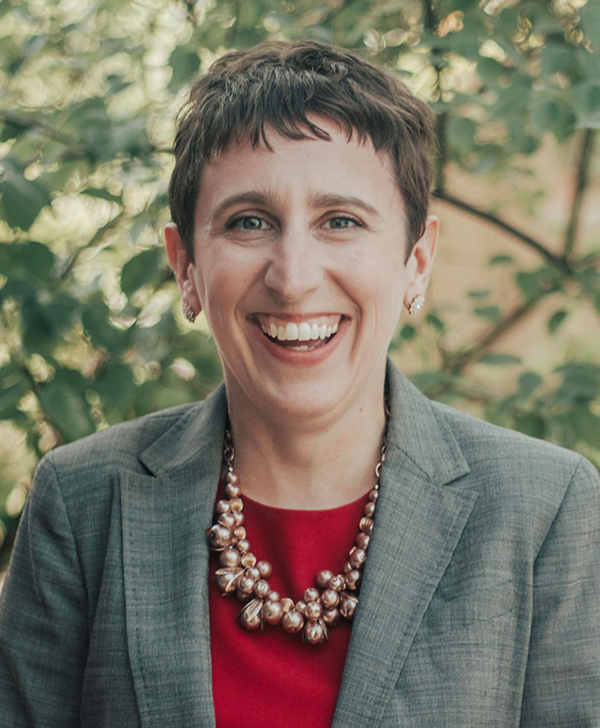
Jan Lauren Boyles
In this new role, Boyles will provide leadership in developing a shared vision for high impact educational practices, known as HIPs, across campus. High-impact practices engage students outside the classroom or as a complement to traditional instruction. Examples at Iowa State include learning communities, University Honors, study abroad, Program for Women in Science and Engineering, internships, capstones and faculty research projects. Together, these activities help students transition to college life and become more engaged in their education. They also contribute to higher retention and graduation rates.
Boyles will serve from Jan. 14, 2022, through Dec. 31, 2023, and report to associate provost for academic programs Ann Marie VanDerZanden.
"Jan offers an impressive portfolio as faculty fellow, including experience in advising and enrollment management, and understands how the various pieces of students' experiences contribute to their academic and professional success," VanDerZanden said. "She's a great addition to the office, and I look forward to her work."
Boyles' areas of focus will include:
- Developing resources to promote HIPs to undergraduates, including a HIP Community of Practice.
- Gathering student input on their experience participating in HIPs.
- Expanding partnerships with academic departments and programs, including the Center for Excellence in Learning and Teaching and Student Innovation Center.
- Leading planned modifications to the University Honors program curriculum to focus on project-based, interdisciplinary and experiential learning.
"High impact practices represent the margin of excellence students need to make the most of their education -- not only while they're on campus, but after they leave as well," Boyles said. "I'm excited to help leverage our great people and programs to create an even greater impact in the future."
A native of West Virginia, Boyles earned bachelor's and master's degrees in journalism from West Virginia University, Morgantown, and a Ph.D. in communication from American University, Washington, D.C. After beginning her career as a newspaper journalist, she held teaching and administrative appointments at West Virginia University, American University and the Pew Research Center before joining Iowa State in 2014. Her research in the Greenlee School centers on the intersections of news, data and civic technology.
Boyles received awards for early achievement in teaching and graduate student mentoring from the College of Liberal Arts and Sciences. She is an elected member of the Association for Education in Journalism and Mass Communication's board of directors and chair of its Council of Divisions. She also serves on the editorial boards of "Digital Journalism" and "Newspaper Research Journal."
Directors of multicultural student success: Teamwork across the university
It's becoming common for universities to have college-level support staff for students of color. At Iowa State, the position has existed since the mid-1980s, thanks to the groundbreaking efforts of George Jackson, an influential campus advocate for underrepresented students.
But in recent years, the network of staff in those college-based roles -- known as multicultural liaison officers since proposed by Jackson, the university's inaugural director of minority student affairs -- saw their responsibilities expanding in both scope and size. At their request, the job was renamed director of multicultural student success (DMSS) about two years ago to acknowledge the growing heft of the duties.
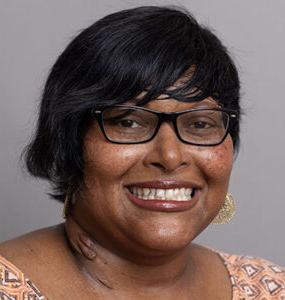
Carmen Flagge
"We felt like our title no longer represented the kind of work we were doing. What is asked of us has broadened. The number of students we serve has broadened. And the challenges our students face have broadened," College of Human Sciences DMSS Carmen Flagge said.
Here's a look at what faculty and staff should know about the role, based on the perspectives of Flagge and two other multicultural student success directors who began in their positions last summer: Arnold Woods in the College of Liberal Arts and Sciences (LAS) and Brady Talley in the Ivy College of Business.
Goal of the role
Generally, the goal of a DMSS is to improve the experience of students of color on campus in a targeted way, by addressing the specific needs and obstacles in each college and of individual students. The ultimate aim is increasing retention and graduation rates.
"Many students aren't expecting there's going to be someone like that at the college level who will be there for them," Flagge said. "A lot of times, I'm saying, 'No, literally, this is what my job is.'"
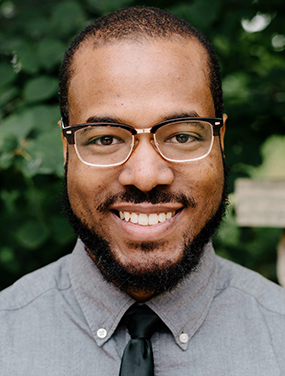
Arnold Woods
Woods can understand their surprise because when he was an undergraduate at Iowa State a little more than a decade ago, he could have used help dealing with the challenges of being a Black student on a mostly white campus. But he was struggling too much to seek out assistance. That’s why accessibility and relationship-building are crucial in his work, he said.
"I want to be that person who can reach the people like I was back then," he said. "When people in leadership positions reach out to students and are invested in their success, I think that has a big impact on them."
Combatting imposter syndrome is a big piece of the support puzzle, Talley said. It's a message students need to hear: "You're here because you belong here."
Wide variety of duties
The specific responsibilities of a DMSS vary by college, but most advise multicultural student organizations and lead a learning community. They work closely with student affairs staff and academic advisors to make sure multicultural students are getting help if they need it, connecting with valuable opportunities and avoiding stumbling blocks.
"These students are brilliant, but they don't have a framework for success. They don't know who to talk to. That's the gap I can bridge for them," Woods said.
The learning communities, like the Connect Four group Flagge leads, are about creating helpful networks for mentoring and developing leaders.
"We try to get students to lean into their identities as leaders," Woods said of the LAS learning community, Bridging Opportunities in Leadership and Diversity. "If you're the first person to go to college in your family, you're a leader already because you're here."
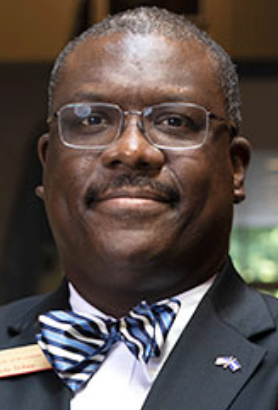
Brady Talley
In many colleges, the DMSS also serves a role in a college’s overall diversity, equity and inclusion (DEI) efforts, training faculty and staff and providing classroom presentations. Talley speaks with every first-year orientation class and said his role can involve facilitating for students, faculty or staff, as needed.
"I call it the DEI firehouse. If there's something going on, I'll respond to it," he said.
Flagge said in Human Sciences, there’s an emphasis on educating all students about DEI and cultural humility to prepare them for working with future clients and colleagues. She also visits first-year orientation classes to talk about the topic.
"We want to start that conversation early about how to connect with people from all different types of backgrounds," she said. "A lot of it is based on getting everyone to think about themselves as people who have a culture."
Connected across colleges
The DMSS group collaborates heavily, meeting every other week to share ideas and plan their jointly hosted programming such as:
- The pop up shop, which provides students free business attire.
- Monthly study tables, which includes two rooms -- one for quiet work, one for collaboration
- Twice-a-semester Real Talk luncheons, which give students an opportunity to provide the DMSS group feedback on a theme
- Social outings such as reserving a recreation services court for a field day or holding a tailgate before a football game.
They also work with campus partners on numerous projects, such as the fall break dinner they co-host with the international students and scholars office and the presentations they contribute to the Academic Program for Excellence, a summer program for incoming first-year multicultural students run by Multicultural Student Affairs.
"We're not on an island," Flagge said. "We really are helping the whole campus community."
The DMSS group supports each other like a family, Talley said, turning out for one another’s events and pushing as a team for new approaches and ideas.
"You can talk about DEI, you can crunch all the data, you can make processes for your processes, but you have to actually put it into practice. Our common purpose is action," he said.
A personal approach
Flagge said she gets a lot of positive feedback about her work from parents and from graduating students.
Know your DMSS
Here are the directors of multicultural student success in each college. To contact the whole group, email dmss@iastate.edu.
- LeQuetia Ancar, Engineering
- Jordan Brooks, Design
- Carmen Flagge, Human Sciences
- Monica Howard-Martin, Veterinary Medicine
- Brady Talley, Business
- Arnold Woods, Liberal Arts and Sciences
- Currently unfilled, Agriculture and Life Sciences
"Sometimes students are grateful right away, but a lot of times that comes when they start to reflect about all they went through and how they weren't alone during that process," she said.
The gratitude is always appreciated because the intensive and personal work a DMSS does can be draining.
"It's a hard job. There's an emotional tax that comes with it," Woods said. "But it's worth doing."
Woods recommended that faculty and staff interested in doing more to help multicultural students also take a personal approach when possible.
"This is a big school, so I know it's tough to do this, but get to know as many of your students as you can, especially the students who come from marginalized communities," he said. "Their wealth of knowledge and lived experiences, if utilized and recognized correctly, could really be transformative for this university."
Talley's advice for faculty and staff to promote inclusivity is to be authentic in their purpose for helping students. He often draws upon his own life stories in working with students, talking about his early struggles in school, his experiences as an Army combat medic and the balancing act it took to get his graduate degree. It helps forge a connection, he said.
"Students know when faculty and staff are authentic and have students' best interest in mind," he said.
Additional holidays confirmed for Nov. 24, Dec. 23
University employees' fall and winter breaks got a little longer with this week's confirmation of two additional paid holidays, awarded Nov. 9 to all state employees by Gov. Kim Reynolds. In an email to faculty and staff, President Wendy Wintersteen and vice president for university human resources Kristi Darr announced Iowa State will implement the two holidays on Wednesday, Nov. 24, and Thursday, Dec. 23. Units should share any impact of the additional holidays with the audiences they serve.
"We deeply appreciate your hard work and dedication to the university -- often going above and beyond your regular responsibilities. Thank you for all that you do for Iowa State," they wrote.
For many employees, the gift creates a five-day weekend next week when many will observe the national Thanksgiving holiday. Nov. 25 and 26 are university holidays. It also adds an extra day to what might be a 10-day period out of the office, Dec. 24-Jan. 2, a possibility announced earlier this month in winter break staffing guidelines. Using three days of paid or unpaid time off Dec. 28-30 creates that longer opportunity away from work over the winter holidays. Dec. 24 and 27 are university holidays.
Iowa State's second pilot of a winter session runs Dec. 20-Jan. 14, and university leaders said students need to receive the support services they seek and essential university operations must continue uninterrupted during the term. Supervisors should make decisions about staffing needs for the additional two days.
Paid holidays for state employees
Expressing her gratitude for their dedication, innovation and accomplishments during an entire calendar year in a global pandemic, Reynolds announced last week that all state employees will receive two additional paid days off in 2021.
"During the pandemic, we were forced to quickly adapt how we operate and, in doing so, we discovered better, more efficient and innovative ways to serve our fellow Iowans and accomplish our goals," Reynolds wrote in her Nov. 9 letter to state employees. "In many ways, those changes made us better.
"As the year comes to a close, we should be proud of our contributions and confident that next year holds even more promise. I hope you'll take some time to reflect on the things you've achieved and experienced this year, at work and in your personal life," she continued.
"I want you to know how grateful I am for your dedication, and the pride I have in what we've accomplished together," she wrote. "Thank you for all you do."
Reynolds awarded two additional paid holidays to state employees last fall, too, in appreciation for their hard work and perseverance through 10 months of a pandemic and the August derecho storm.
Program provides bleeding control supplies and training
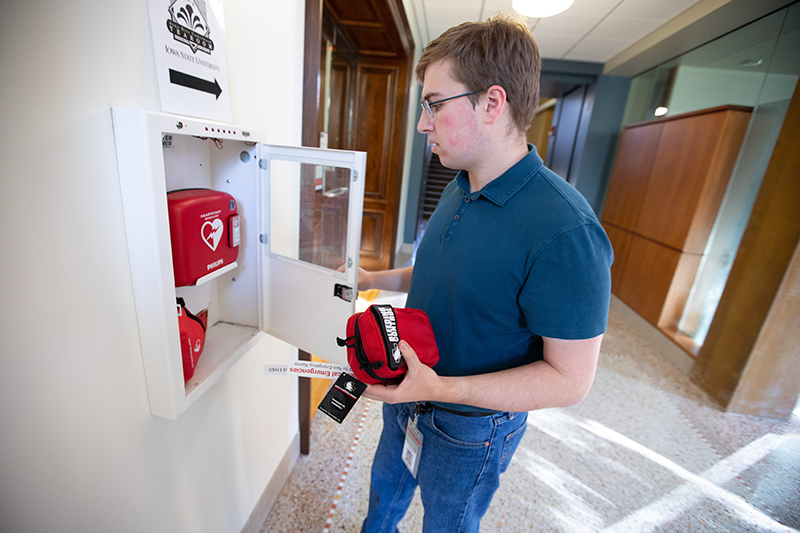
Environmental health and safety student employee Liam Gleason installs a bleeding control kit in MacKay Hall on Oct. 25. Nearly 140 of the kits are being installed across campus as part of the Stop the Bleed initiative. Photos by Christopher Gannon.
A new initiative that touches every corner of campus hopefully will never be needed.
ISU Police and the environmental health and safety (EHS) department have partnered to bring the national Stop the Bleed campaign to Iowa State, installing bleeding control kits in every one of the nearly 140 cabinets across campus that holds an automated external defibrillator (AED).
"While severe bleeding is not common, when it does occur it can be life-threatening in a matter of minutes," emergency manager Clayton Oliver said. "The kits enable members of the campus community to help in those initial minutes before professional responders get there. It may seem like a little thing, but the little things add up to help prepare us for our next disaster."
Though anyone can use the bleeding control supplies if needed, accompanying Stop the Bleed training is designed to give bystanders the confidence and know-how to use simple but effective life-saving methods to spring into action.
"We want you to have the knowledge, skills and abilities -- and then never use them," said associate vice president and police chief Michael Newton. "We all have a responsibility to be prepared for the worst."
Program's origins
After 28 people were killed in 2012 in the deadliest K-12 shooting in U.S. history, at Sandy Hook Elementary School in Newtown, Connecticut, a local trauma surgeon convened a panel of national experts to evaluate the response. Incorporating new military data on treating hemorrhaging injuries in Iraq and Afghanistan, the panel developed recommendations for improving the survival of people who are severely bleeding. That led to the White House launching Stop the Bleed as an awareness campaign in 2015. More than 1 million people have taken a Stop the Bleed training program since they were first offered in 2017.
The techniques taught in Stop the Bleed training are useful in any instance of uncontrolled bleeding. Though they are rarely serious, cuts are among the most common injuries on campus, Oliver said.
"That happens for a variety of reasons," he said. "We have farms, labs and workshops. We have 30,000 students who don't always think things through involving knives and glass."
Installing the kits
Newton and Oliver had discussed bringing Stop the Bleed to campus before COVID-19 struck, but the plan was put on hold until this summer, when the reduced need for an emergency response to the pandemic allowed time to revisit back-burner projects, Oliver said.
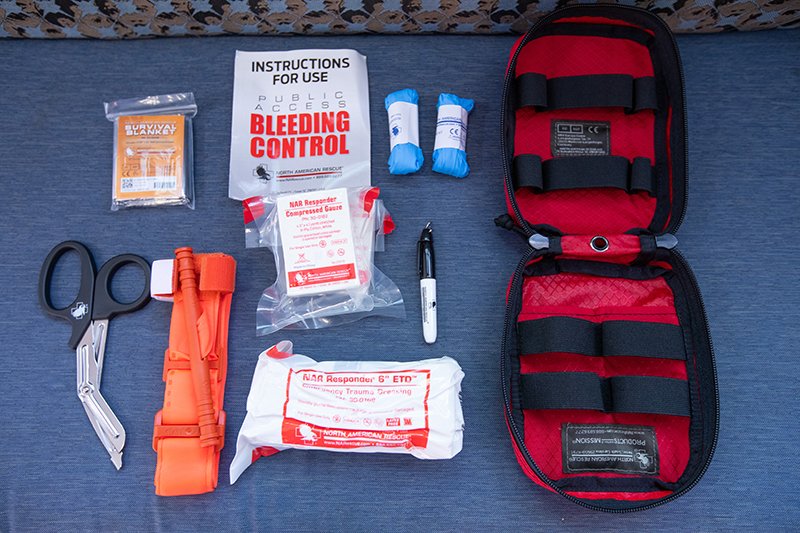
The contents of a Stop the Bleed kit.
ISU police paid for the bleeding control kits, which have been installed over the past six weeks by EHS student employees who conduct inspections of fire extinguishers and AEDs. Each kit includes a tourniquet, compressed gauze and trauma dressing, a survival blanket, nitrile gloves, trauma shears and a permanent marker.
The kits' contents support the main techniques taught in Stop the Bleed: correctly using tourniquets to stop severe blood loss in limbs and, for other traumatic injuries, applying pressure and packing wounds with gauze and dressing. Gloves protect the treatment provider from bloodborne pathogens, shears can cut off clothing if necessary, the blanket preserves the patient's body temperature and the marker is for writing what time a tourniquet is applied.
Realistic training
Stop the Bleed training takes about two hours, the first half focused on learning physiological concepts and the second half spent trying out the treatment methods with hands-on bleeding simulators. The classroom half of the training may soon be available online, but there's no replacing the experience of working with a simulator, Oliver said.
"Hopefully, they get a sense of how it feels," he said.
The hands-on portion includes both a simulated torso and a limb. Fluid representing blood is pumped through the wounds on each, so trainees can see how pressure and gauze can slow blood flow and if they've used the tourniquet correctly.
"When I was at University of Kentucky, we usually used pink Crystal Light because it was easily visible but not too similar to blood," Oliver said.
A team of instructors is being assembled, many of them ISU police officers. Newton said the training will be offered much as the police department's violent incident response training, which departments or units can schedule as a group. Sessions geared for interested individuals also will be available for signup on Learn@ISU.
Oliver said Stop the Bleed has been a popular training program at other institutions where he's seen it offered.
"One of the common responses I get is that it's empowering. You're able to be part of the solution instead of standing around asking, 'What do I do?'" he said.
Be ready when the snow starts falling
Some snow came to campus last week and quickly melted away, but more will be on the way.
Knowing where to park when significant snow covers campus parking lots will help you and the facilities planning and management (FPM) crews that clear lots. Drivers are asked to not park in their usual parking lots until they have been cleared. There are several designated lots where all valid ISU parking permits will be honored.
- Southwest corner of Iowa State Center (lots A3, A4, B5 and B6)
- North of Molecular Biology (lots 29 and 30)
- North of General Services Building (lot 41)
Anyone parking at the Iowa State Center can ride CyRide to campus. The free #23 Orange route runs at five- to 10-minute intervals. During significant weather events, CyRide adds buses to routes to assist the campus community.
FPM crews follow these six priorities for clearing snow and ice:
- Roadways serving university facilities
- Parking lots: Accessible spaces, then permit spaces and general spaces
- Main walkways traversing campus and leading to main building entrances
- Main building entrances and accessible entrances
- Secondary sidewalks (those not in the primary route to campus facilities but instead leading to side or back doors
- Secondary building entrances including side and back entrances and limited-access exits
Employees may use the online report a problem form or call 4-5100 to let FPM know about spots where ice or snow are a concern.
Safe travels
Environmental Health and Safety (EHS) developed safe winter walking posters in PDF format that can be printed and hung in buildings across campus. EHS has five tips for walking on snow or ice:
- Plan ahead to give yourself time
- Wear shoes or boots with good traction
- Use special care when entering and exiting vehicles, entering or leaving buildings and climbing or descending stairs
- Walk on designated walkways
- Use short steps or shuffle for stability
There are salt/sand shakers located in many building entrances across campus employees and students may use to treat problem areas. If more salt/sand is needed during the snow season call 4-5100.
ISU Police reminds all drivers to clear snow from their cars and make sure they can see out of all windows before departing. It improves safety for everyone on campus.
Taking advantage of warmer weather
Because they didn't have to move snow during October and the first half of November, FPM crews stayed busy working on campus grounds. For example, lights already have been strung on the holiday tree east of Beardshear Hall and will be lit for the first time Dec. 3 during Winterfest, said Barb Steiner, FPM senior manager of campus services.
Steiner noted several other projects that were completed or extended with the help of warmer weather:
- Grading and planting projects at the College of Veterinary Medicine and Jack Trice Stadium
- Several short sections of sidewalk
- At the National Pan-Hellenic Council Plaza northwest of the Memorial Union, a small retaining wall will protect the root zone of a maple tree
- Repairs and prep to winter equipment
Much to cheer about
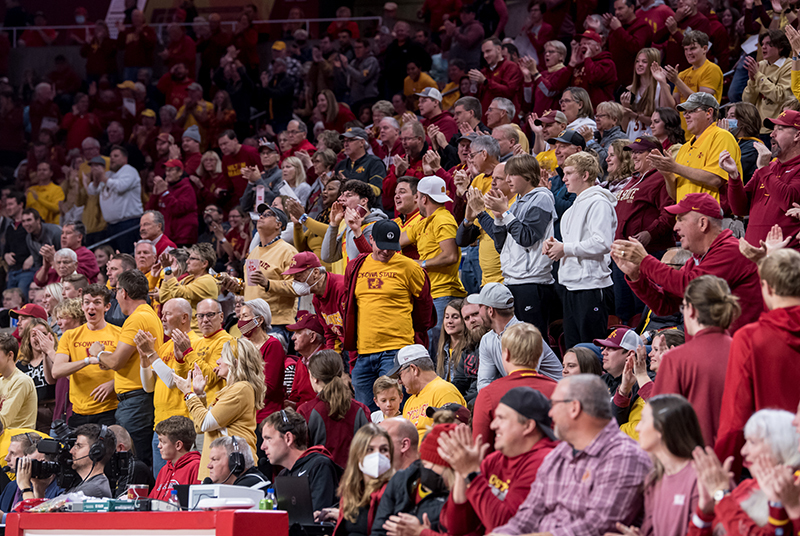
Photos courtesy of athletics communications.
(Pictured) Fans cheer the men's basketball team to a victory over Oregon State in a full Hilton Coliseum Nov. 12. In the 50th anniversary year of Cyclone athletics in Hilton, the fan experience is back to pre-pandemic "normal" this winter season, with seating at 100% capacity and face coverings optional. Hand sanitizer stations remain available in the concourse.
Hilton is the site for a basketball twin bill this Sunday, and tickets still may be purchased for each game. The women host Southern University at noon, and the men's team tips off against Grambling State at 5 p.m.
The first sporting event in Hilton Coliseum was a Dec. 2, 1971, men's basketball victory over the University of Arizona.
